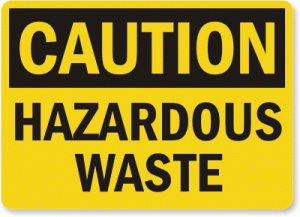
The establishment was found to have buried more than 140 gallons of hazardous substances, including four (4) 55 gallon drums containing used oil, containers of used oil filters, and approximately 20 tires on the property. In addition, the facility has a trench drain inside that directed petroleum contaminated drainage outside into a pit which discharged to the ground. Lastly, the business had a large, unprotected pile of solid waste, classifying them as a solid waste management facility, without proper permit.
The New York State Department of Environmental Conservation (NYSDEC) Commissioner said “The long list of egregious waste violations in this case is alarming and shows blatant disregard for the laws that are in place to protect our environment and the public’s health and safety”.
Although this might be an extreme case, there are many businesses who are receiving violations for not following proper waste disposal regulations. Are you educated on the proper disposal methods for waste generated at your facility?
What is a hazardous waste? Hazardous waste has one or more of the following characteristics:
- Ignitability (flash point <140°F)
- Toxicity (harmful when ingested or absorbed, fails the TCLP chemical analysis test)
- Corrosivity (pH less than or equal to 2 or greater than or equal to 12.5)
- Reactivity (unstable, violent reactions with water)
- Listed on NYSDEC hazardous waste list (6 NYCRR Part 371)
All businesses should be cautious when labeling materials as hazardous waste. If a non-hazardous waste is listed as hazardous, it must be disposed of as hazardous waste even if it does not fall into the categories listed above. This can be very pricy since hazardous waste disposal is much more expensive than non-hazardous waste disposal/recycling. Additionally, hazardous waste must be stored and managed differently than non-hazardous waste. Timing the disposal of hazardous waste is also important to avoid Large Quantity Generator status (LQG) and associated hazardous waste taxes.
Examples of potentially hazardous wastes are:
- Solvent
- Paint waste
- Lead acid batteries
- Florescent light bulbs
- Gasoline
- Plating waste
Examples of potentially non-hazardous waste are:
- Used oil
- Used tires
- Drained oil filters
- Used anti-freeze
You should know what wastes are generated by your business and how to label and dispose of that waste. Avoid violations, fines, and legal action by educating yourself on hazardous waste rules and regulations and disposal methods.
For more information regarding hazardous waste classification, storage, and disposal, please call Walden Environmental Engineering at 516-624-7200.
